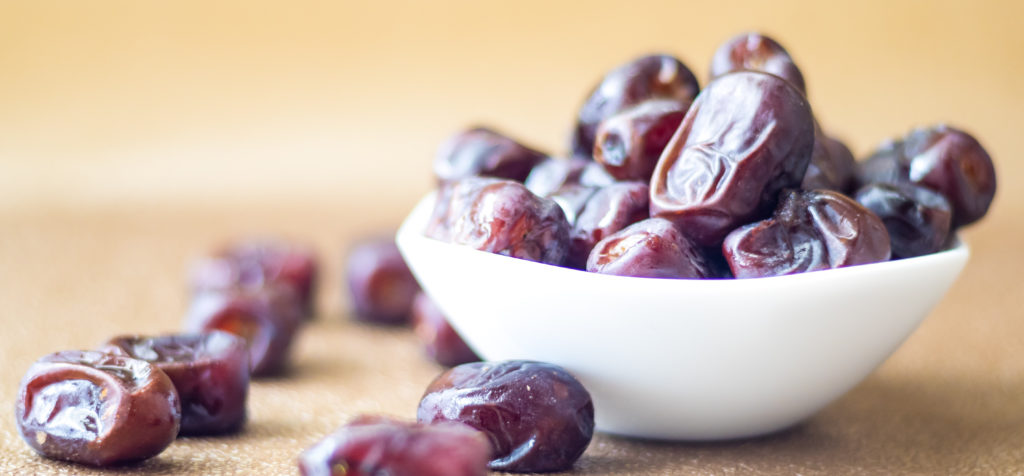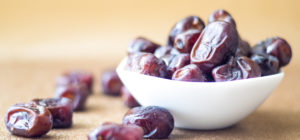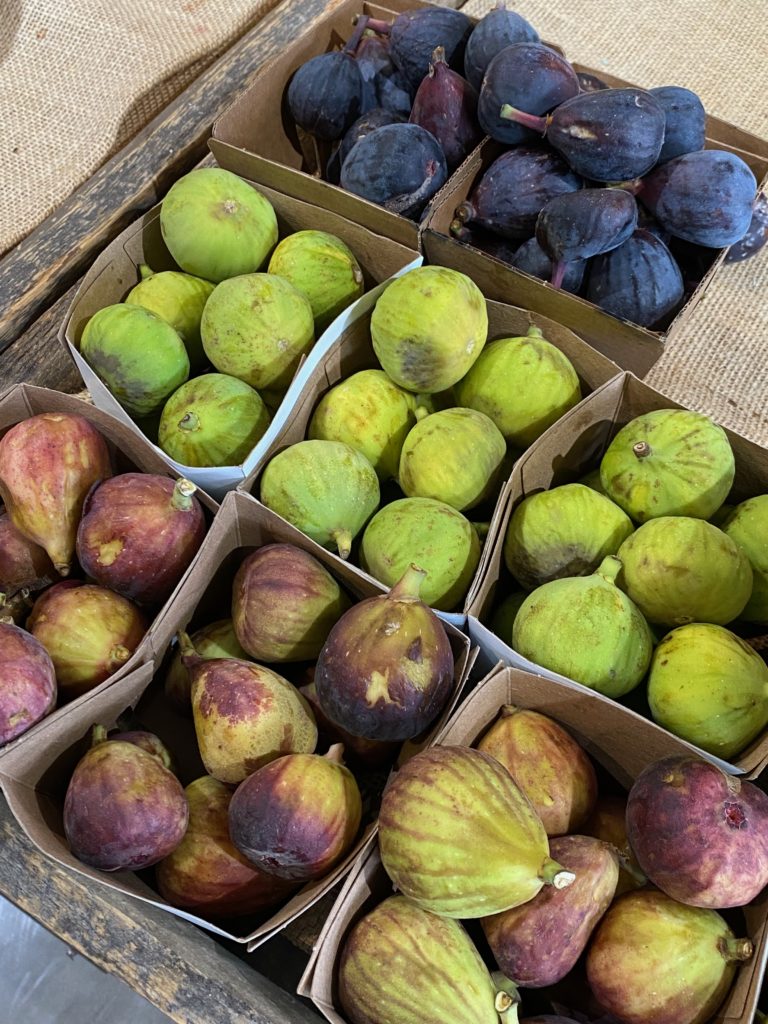Dates in My Low-Ox Diet Plan: What Does the Data Say?
Following a low-oxalate diet is much easier when you have the right oxalate data. Unfortunately, there’s a lot of misinformation, limited science, and conflicting results on the internet, which leads to confusion when deciding which low oxalate foods to put on your plate.
The debate around the oxalate content of dates perfectly illustrates this conundrum. Rumors suggest they’re high in oxalate, while other sources claim the opposite.
As you’re wading through this conflicting information, what should you believe? Let’s look at the data together to find out how much oxalate dates contain, and whether they have a place in a low-oxalate diet.

Before We Begin: Learning to Read Oxalate Data
Let me provide some orientation on interpreting oxalate data.
The universal way to report the oxalate content of foods is oxalate per 100 grams. However, serving sizes vary from one food to the next.
Most people want to know how much oxalate is in one date. However, a single piece of fruit naturally comes in different sizes, which means oxalate content could vary from one date to another.
Depending on the variety, a date might weigh 7 mg or 24 grams. So, keep in mind that there is not one right number for oxalate in dates—especially by the piece. Understanding oxalate in natural foods takes some thought about several variables involved, especially the weight (amount) of the item you eat.
Now, with that reminder, here I’ll refer to the oxalate content in typical (modest) servings. Let’s get back to the oxalate content of dates.
Dates in My Low-Oxalate Diet Plan: What Does the Data Say?
The peer-reviewed medical literature doesn’t include dates in the oxalate data testing reports. However, the VP Foundation sponsored tests of dates performed in Laramie, WY at the University of Wyoming by Dr. Michael Liebman and his team. They tested Medjool dates three times, California-grown Deglet Noor dates once, and another unspecified variety grown in Pakistan.2
According to their reported results, 24 grams of pitted Medjool dates (around one date) contains approximately 1–2 mgs of total oxalate. 24 grams of Deglet Noor dates (about three and a half dates) contain around 2 mg.1 No published testing found over 2.5 mg of oxalate per 24-gram serving.
If Dr. Liebman’s testing is right, dates are low oxalate foods. Yet mainstream sources like WebMD and Harvard incorrectly claim dates are high in oxalate, without offering any citations showing where they got this idea. They also failed to indicate the varieties, rendering the data useless.
These “reputable” and familiar institutions are seemingly reporting oxalate data, but not really. Verifiable testing shows them to be flat out wrong. This misinformation, coupled with a lack of transparency, is adding to the confusion around oxalates. This undermines the efforts of their readers to make educated decisions and limit oxalate-rich foods.

Dates vs. Figs: Oxalate Content of Food
Why would Harvard and WebMD post faulty information about dates? Perhaps the mistake comes from someone confusing dates with their Mediterranean counterpart, figs. Dates and figs are often and easily mixed up, both being small, soft, dark, and intensely sweet.
Despite these superficial similarities, dates and figs are very different fruits, especially in the oxalate department.
I know of only five tests of figs, four of them being fresh (not dried) and of the “unspecified” variety and one of them of the dried Mission fig. Some of the unspecified fresh figs have also tested low in oxalate, even lower per 100g than dates!
However, other tests find figs—especially the dried California mission figs we usually encounter in the stores—have about 12 times the oxalate content of dates with up to 95 milligrams of oxalate per 100 grams.
A typical serving of dried figs is 42 grams (four figs), which has ~34 mg oxalate. That’s 11 times higher than the approximately three mg oxalate in two Medjool dates (weighing 47 grams). Eating four to six figs could deliver a substantial oxalate level and have serious health consequences.
If you’re a fan of Fig Newtons, a test also conducted at University of Wyoming found ~8 mg oxalate per cookie—which definitely won’t kill you. But the standard serving size is three cookies (25 mg oxalate). Most people I know eat at least four at a time (32 mg of oxalate).
Moreover, researchers haven’t taken into account that there are more than 700 named varieties of fig trees. With so much breadth for one fruit, even the most exacting of researchers can’t test the oxalate content of each type of fig that exists.
Finding Oxalate Data You Can Trust
The dates versus figs discussion touches on several data-related problems in the oxalate space. And to make things even more contentious and confusing, the oxalate data listings in textbooks (for nurses and other health professions) and nutrient content tables used by dieticians are short and filled with errors.
As a community, we must look at the information out there through a critical lens, and learn to recognize bad data. New interest in this topic is only likely to increase the confusion and arguments in the short run. All of us becoming more data savvy will pave the way forward for having more clarity about healthful food choices. You definitely don’t need to eliminate oxalate foods from your low-oxalate diet plan that you love, like dates.
While it is impossible to correct every problem that exists with the science around oxalates, you can make good food choices with the information that is available. You just need a good filter to cull out the junk. I’ve been working to curate the most accurate oxalate data available, and help you make the most informed food decisions possible. As you’re trekking along your low-oxalate journey, take my (expanding) resources as a trust map and companion.
Sign up for my email list to get accurate, reliable information about the oxalate content of more foods and tips for sticking to a low-ox diet plan.
Data Sources
DATES (are Low Oxalate Foods)
“The Low Oxalate Diet Addendum 2011 Fall- Numerical Values Table.” The VP Foundation Newsletter, no. 36 (November 2011): 17–20.
“The Low Oxalate Diet Addendum 2012 Summer- Numerical Values Table.” The VP Foundation Newsletter, no. 37 (June 2012): 6–9, 19–25.
FIGS
The Low Oxalate Diet Addendum 2008 Fall- Numerical Values Table. The VP Foundation Newsletter 7–11.
The Low Oxalate Diet Addendum 2011 Fall- Numerical Values Table. The VP Foundation Newsletter 17–20.
The Low Oxalate Diet Addendum 2011 Spring- Numerical Values Table. The VP Foundation Newsletter 14–17.
Hönow, R., and Hesse, A. (2002). Comparison of extraction methods for the determination of soluble and total oxalate in foods by HPLC-enzyme-reactor. Food Chemistry 78, 511–521. https://doi.org/10.1016/S0308-8146(02)00212-1.
FIG NEWTONS
The Low Oxalate Diet Addendum 2022 Winter- Numerical Values Table. The VP Foundation Newsletter 12.


I’ll skip the figs thanks. I’ve had so much fruit and smoothies and stuff that I’m not really interested anymore … plus, the Heath disasters of oxalates (kidney stones and various pains) really have me not interested . Thanks for the update
Thanks for the information.
It’s hard enough trying to learn what is healthy or not, but misleading information is overwhelming from supposedly reliable sources.
What about date seeds? I wanted to buy date seed coffee substitute. The seeds don’t fully dissolve and the roaster is recommending to put the leftover seeds in a smoothie or otherwise consume the leftovers from the brew. Is it a safe drink, safe to eat or are both bad ideas from an oxalate perspective?
I’ve always been a huge fan of both dates and figs. Growing up in a warm desert climate with easy access I have eaten more than my fair share of each of them, and with figs in particular they are such a treat to eat fresh when in season. I would guess I probably eat about 5 at a time. Regarding the dates, not only are there different varieties but dates are also eaten at different levels of ripeness. In the Middle East in particular they are quite popular when they are crunchy and juicy, so I look forward to any updates on data about this because as far as I’m concerned the nutritional value of dates is incredible and I consider them to be almost a daily multivitamin/mineral supplement. Generally I will eat one Medjool a day on average.
Thanks for the information cause you never know what you’re supposed to eat and what you’re not supposed to eat. Everyone says you can’t eat this and you can’t eat that it’s high in oxalate then someone else say yes you can eat that you don’t know what to eat to prevent kidney stones